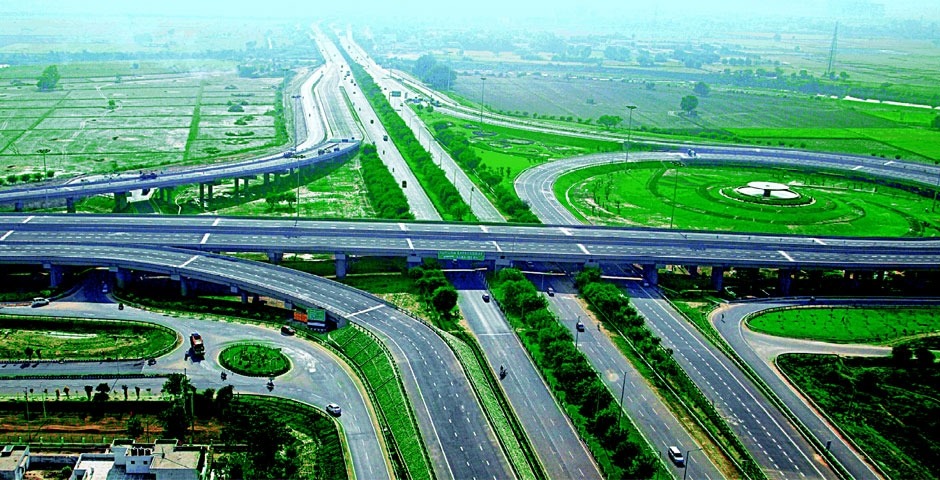Yamuna Expressway to Get New ₹270 Cr Interchange: A Big Leap for Connectivity & Growth

April 2025 | Greater Noida, Uttar Pradesh
In a decisive push to bolster regional infrastructure, the National Highways Authority of India (NHAI) has been entrusted with constructing a ₹270 crore interchange linking the Yamuna Expressway with the Eastern Peripheral Expressway (EPE). The Uttar Pradesh cabinet’s approval now unlocks long-delayed progress on this pivotal transport project.
Project Overview: Design, Land & Timeline
- Scope & Design: Spanning roughly 11 km, the interchange features eight loops—four for entry and four for exit—ensuring uninterrupted traffic flow between the two expressways across distinct levels.
- Land Acquisition: Covering about 60 hectares, the site near Jaganpur-Afzalpur—approximately 10 km from the Yamuna Expressway’s Zero Point—is now fully acquired. Compensation has been delivered, including 7% population plots to 77 farmers, with more parcels allocated earlier in the year.
- Timeline: With planning and surveys complete (land survey finalized, design approved), construction is expected to begin imminently—possibly as early as August 2025—and wrap up within a year.
Why It Matters: Connectivity, Convenience & Economic Growth
- Drastic Reduction in Travel Distance & Time
Currently, vehicles from Ghaziabad, Hapur, and Meerut face a 15–20 km detour via traffic-congested hubs like Pari Chowk and Kasna to transition from Yamuna Expressway to EPE (and vice versa). The new interchange will eliminate this detour entirely, streamlining travel.
- Enhanced Access to Jewar Airport
The upcoming Noida International Greenfield Airport at Jewar relies heavily on robust connectivity. This interchange will provide direct access from the Yamuna Expressway via EPE, facilitating seamless airport transit.
- Toll-Free Interchange Access
While tolls will apply on the main expressways, the interchange itself will be toll-free, ensuring commuters do not bear additional costs for using this connector.
- Commercial & Tourism Boost
The interchange offers improved access to key destinations such as Agra, Mathura, Greater Noida, and Delhi-NCR, invigorating local trade, tourism, and real estate development in the region.
- Real Estate – A Catalyst for Growth
The Yamuna Expressway corridor, already a magnet for residential and commercial projects, stands to gain significantly. Enhanced connectivity raises the appeal of:
- Plots and housing developments like Paras Yamuna Expressway project—bringing quick access to Agra, Vrindavan, and Mathura.
- Gated communities, green zones, and modern infrastructure in areas like Sector 22D, driven by the expressway’s strategic location and growth potential.
Infrastructure advantages like proximity to institutions, hospitals, and educational hubs add to the investment allure.
Structural & Landowner Benefits
- Minimal congestion: The cloverleaf design prevents traffic jams during entry/exit, enhancing safety and speed.
- Fair Land Use: Farmers received equitable compensation via alternate plots, mitigating disputes and accelerating implementation.
Project Snapshot Table
Feature | Details |
Project Cost | Approx. ₹270 crore |
Authority | NHAI (funding, construction, operation, maintenance) |
Land Owner | YEIDA (owner, policy decision authority) |
Land Area | 60 hectares |
Loops & Ramps | 8 loops over 11 km (4 ascent, 4 descent) |
Start of Construction | Expected late 2025 (possibly August) |
Completion Timeline | Within 1 year after start |
Toll Policy | Toll-free interchange—tolls only on expressways |
Key Benefits | Reduced detours, airport connectivity, real estate boost |
Stakeholders Benefitting | Commuters, real estate developers, farmers, airport users |
Yamuna Expressway to Get New ₹270 Cr Interchange :This interchange stands as a transformative milestone in Uttar Pradesh’s infrastructural roadmap. By resolving long-standing detours, ensuring airport accessibility, and catalyzing real estate and regional growth—especially around the Yamuna Expressway—it exemplifies how strategic infrastructure can reshape transit and development dynamics. As construction kicks off in late 2025, all eyes will turn toward its timely delivery and the ripple effects it promises across the NCR and beyond.















